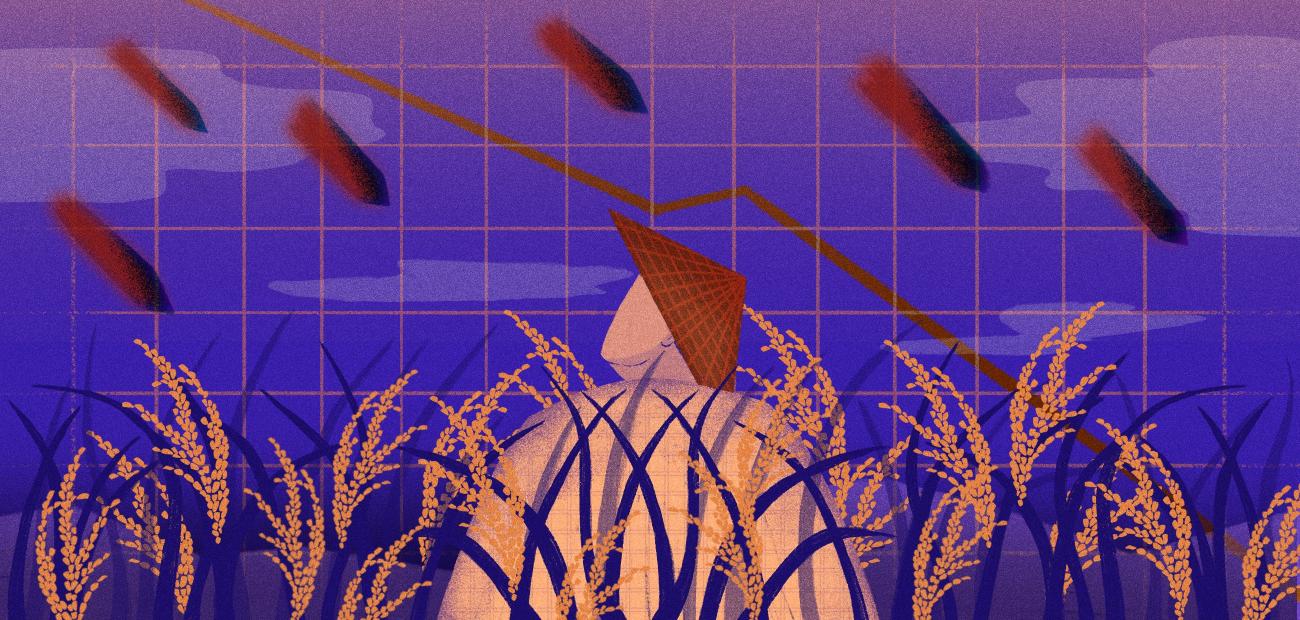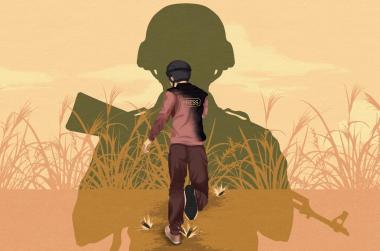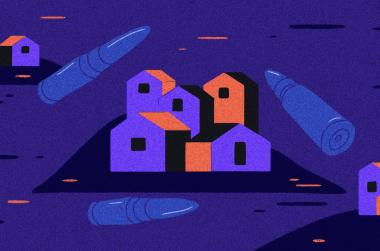The writer is a journalist in Kachin State who is receiving support from The Kite Tales to write these diaries.
I’ve been a journalist for nearly a decade in Kachin State, northern Myanmar. A few years ago, I started visiting villages around Myitkyina, the Kachin capital city, to speak to farmers for stories about the challenges they face and their living conditions. Farms close to Myikyina often grow vegetables like mustard leaves, eggplants, leafy kailan, as well as flowers, while those in more rural areas grow rice and maize.
While farmers’ lives are always difficult, in the early days of my visits they were able to earn a decent annual wage.
But when I visited these farms and gardens again earlier this year to see how the farmers were coping after the coup, many told me the prices of agricultural inputs have risen and their businesses have deteriorated.
Incomes have halved from the previous years. They used to earn over 30,000 kyats every day through their regular customers but that has plummeted to a little over 10,000 kyats now. With low profits, they say they are struggling to make ends meet.
I remember how enthusiastically they used to answer my questions. But now, they responded in frustration and disappointment.
Prices for agricultural inputs like pesticides, herbicides, fertilisers, seeds have been rising since the coup. At the same time, farmers aren’t getting good prices for their produce.
"Prices have gone up by 50%. This year, forget about making a profit. We’re trying our best not to incur losses, to have enough to feed ourselves,” a farmer in a village about six miles to the west of Myikyina told me in resignation as he sprayed pesticide on his plants.
After hearing about their plight, I wondered how poor farmers with big families are surviving and felt really sorry for them.
These villages aren’t even very far from Myitkyina. They are on the outskirts and less than a half-hour drive from the city. I didn’t encounter many inspections or checkpoints along the way.
But it’s not just around Myitkyina that farmers are facing problems. In the north, in Injangyang, many farmers lost their paddy harvests because of a rat infestation.
In addition, the climate has been wreaking havoc over the past year. Floods destroyed paddy fields and reduced rice yields.
Another factor is the armed conflict. Following the coup, there have been repeated clashes between the Kachin Independence Army (KIA) and the Myanmar military council since March 2021.
So farmers in conflict zones have had to flee, which means they haven’t been able to harvest their crops to earn an income.
Even if the fighting has stopped and some farmers want to go home to harvest, they dare not return, either because the military troops are stationed there or because they fear that landmines have been laid on the land, as has happened in the past. So it’s a double whammy.
Myanmar is still an agrarian country and experts have said more than 60% rely on agriculture as a livelihood. There is a perception of Kachin as a commercial/business state because people see and hear about jade mining, trading, and many other businesses. But ours is a mountainous region so there are many people who make a living from farming. Quite a lot of them have been engaged in agriculture since the time of their ancestors.
That's why I decided to focus one of my first diary entries on farmers in Kachin. As I write this, I am really concerned about their lives. Seeing their daily struggles to feed themselves, I want to pray for the stability of the country and the speedy recovery of their livelihoods.
Artwork by JC.





